Complete Solutions to Exercise-3 (Part-I) JEE Advanced of chapter AROMATIC COMPOUNDS of Class 12 book with complete answers and questions
| Class 12 | CHEMISTRY |
| Chapter | AROMATIC COMPOUNDS |
| RESONANCE NEW | Exercise-3 (Part-I) JEE Advanced |
| Number Of Questions | 36 |
| Academic Year | 2023-24 |
Statement I: In strongly acidic solutions , anline becomes more reactive towards electrophilic reagents Statement II: The amino group being completely protonated in strongly acidic solution, the lone pair of electrons on nitrogen is no longer available for resonance.
04:11View SolutionHow would you synthesise 4-methoxyphenol from
bromobenzene in not more than five steps? State clearly the
reagents used in each step and show the structure of the intermediate compounds in your synthetic scheme.03:30View SolutionWrite structures of the products A, B,C,D and E in the following scheme.
 01:50View Solution
01:50View SolutionConvert
 02:40View Solution
02:40View SolutionHow would you carry out the following conversion efficiently using NOT more than four steps? Give the appropriate reagent(s) and reaction condition(s) empolyed in each step.
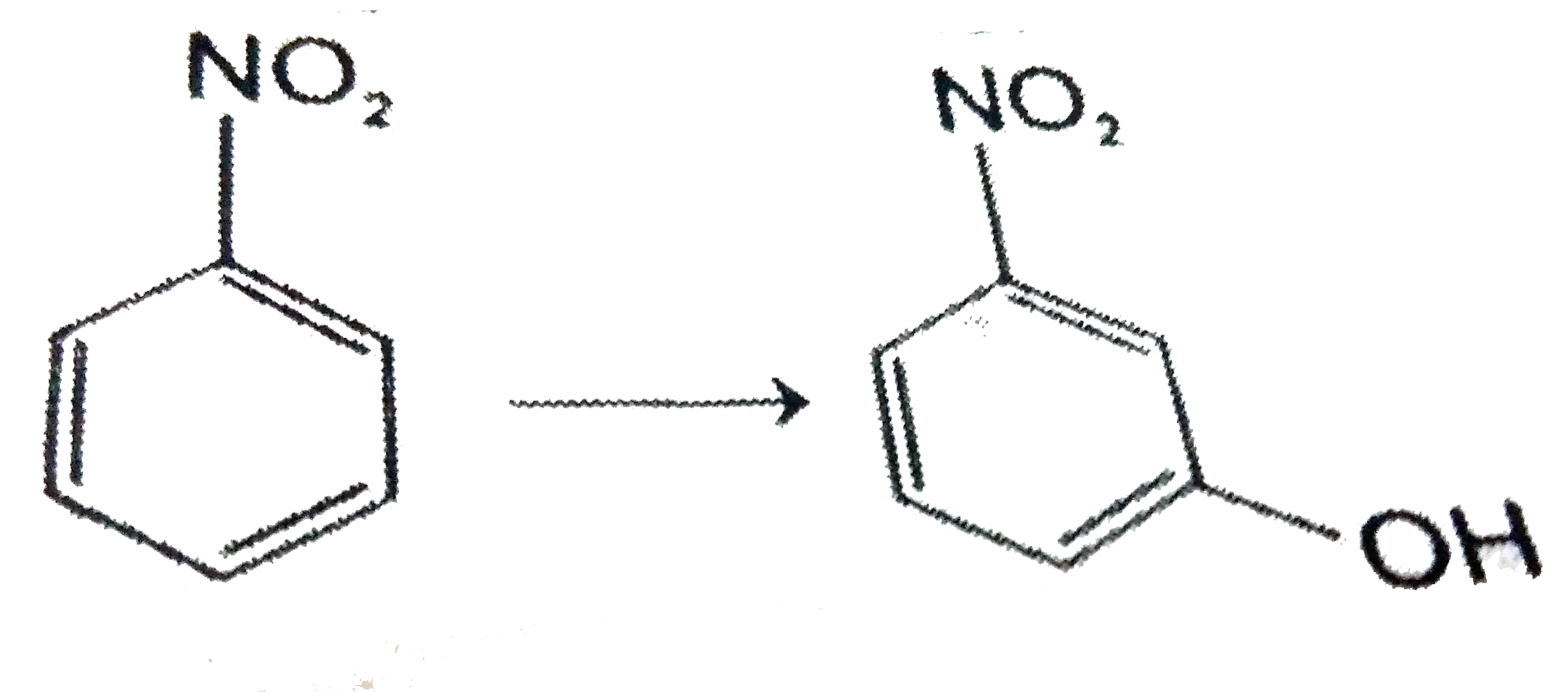 01:24View Solution
01:24View Solution
Identify A, B, C, D and write the balanced chemical equations of formarion of A to B and A to C.04:33View Solution
under Hofmann conditions will give :03:54View Solution
Which reagent (X) is used to convert I to II02:12View SolutionConsider the pathway of a well known organic reaction

Which step is rate determining step?02:42View Solution`CH_(3)NH_(2)+CHCl_(3)+KOH to` Nitrogen containing compound `+KCl + H_(2)O`.
00:55View Solution
What are P & Q.04:32View SolutionReimer-Tiemann reaction introduces an aldehyde group on to the aromatic ring of phenol, ortho to the hydroxyl group. This reacrtion involves electrophilic aromatic subsititution. It is a general method for the synthesis of subsituted salicyladehydes as depiced below:

Which one of the following reagents is used in the above reaction ?03:14View SolutionReimer-Tiemann reaction introduces an aldehyde group on to the aromatic ring of phenol, ortho to the hydroxyl group. This reacrtion involves electrophilic aromatic subsititution. It is a general method for the synthesis of subsituted salicyladehydes as depiced below:
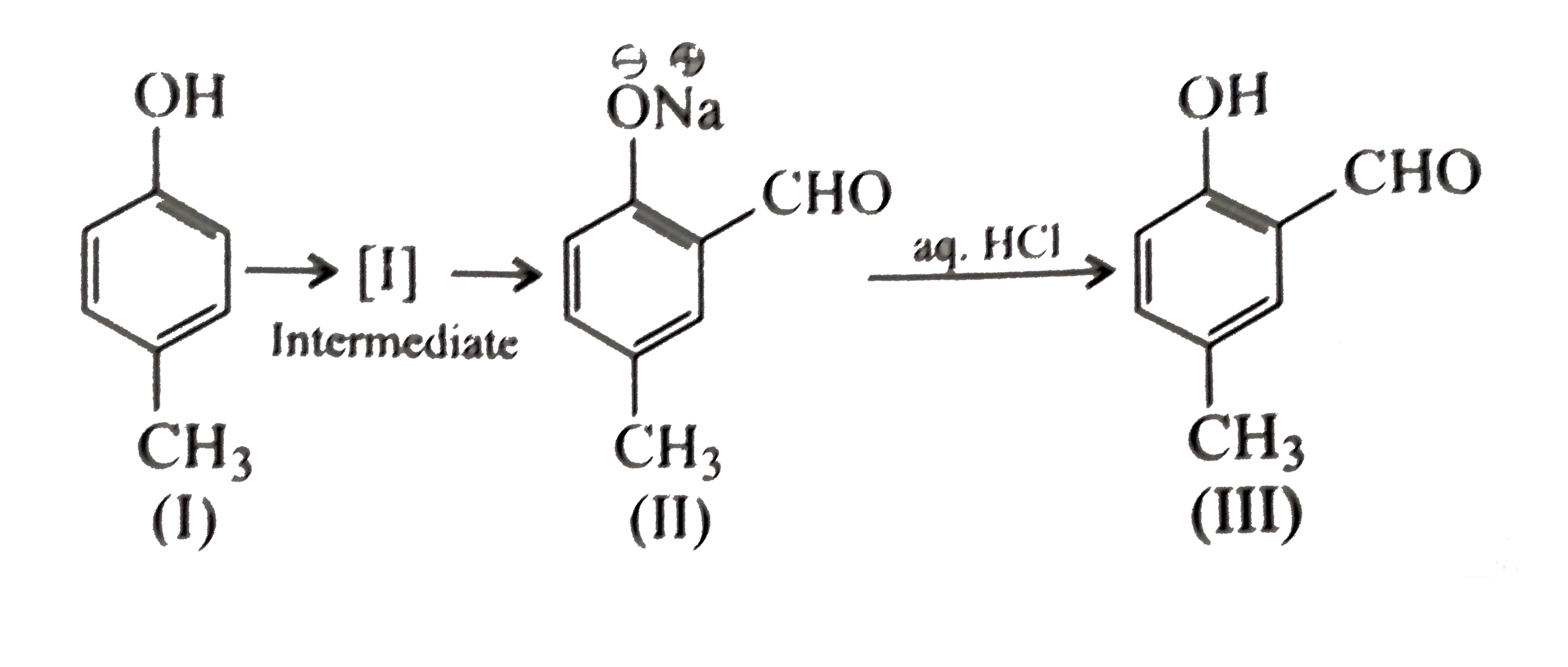
The electrophile in this reaction is:03:29View SolutionReimer-Tiemann reaction introduces an aldehyde group on to the aromatic ring of phenol, ortho to the hydroxyl group. This reacrtion involves electrophilic aromatic subsititution. It is a general method for the synthesis of subsituted salicyladehydes as depiced below:

The structure of the intremediate (I) is:04:37View SolutionIn the reaction
 the intermediate(s) is/are:10:43View Solution
the intermediate(s) is/are:10:43View SolutionMatch the reactions in Column I with appropriate options in Column II.
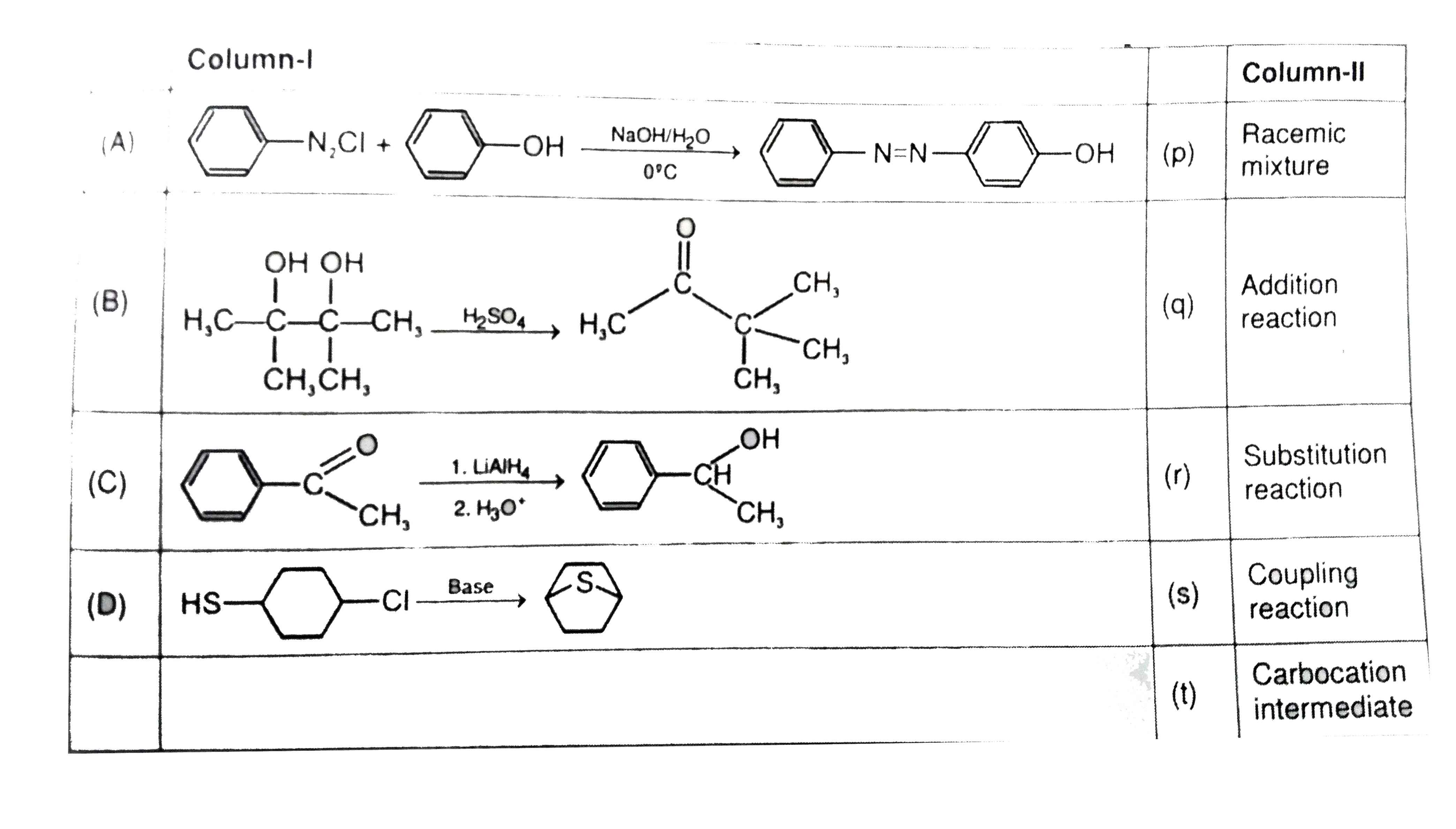 09:17View Solution
09:17View SolutionThe major product of the following reaction is :
 02:03View Solution
02:03View SolutionAmongst the compounds gives, the one that would form a brilliant colored dye on treatment with `NaNO_2` in dil. `HCl` followed by addition to an alkaline solution of `beta-`naphthol is
03:47View SolutionIn the following reacation. The product(s) formed is/are
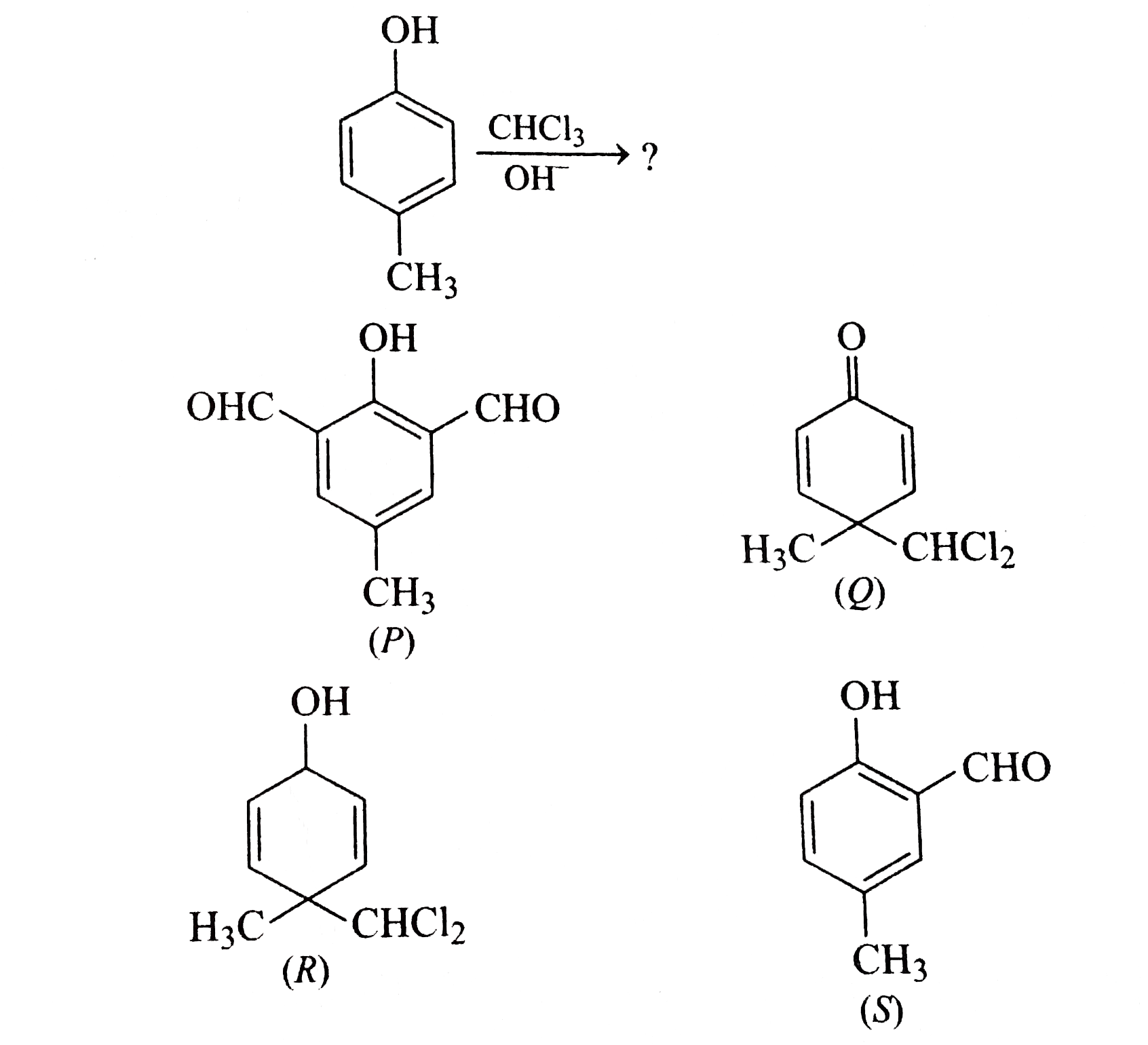 05:43View Solution
05:43View SolutionThe major product(s) of the following reaction is (are)
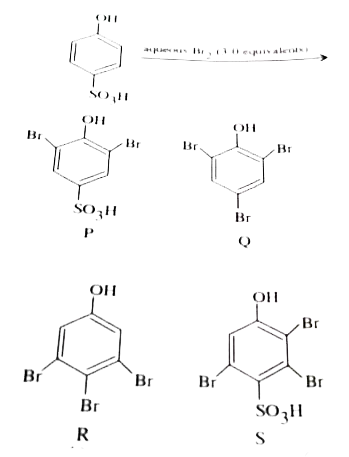 02:02View Solution
02:02View Solution`P` and `Q` are isomers of dicarboxylic acid `C_(4)H_(4)O_(4)`. Bothdecolorize `Br_(2)//H_(2)O`. On heating, `P` forms the cyclic anhydride. Upon treatment with dilute alkaline `KMnO_(4),P` as well as `Q` could produce one or more than one forms `S,T` and `U`.
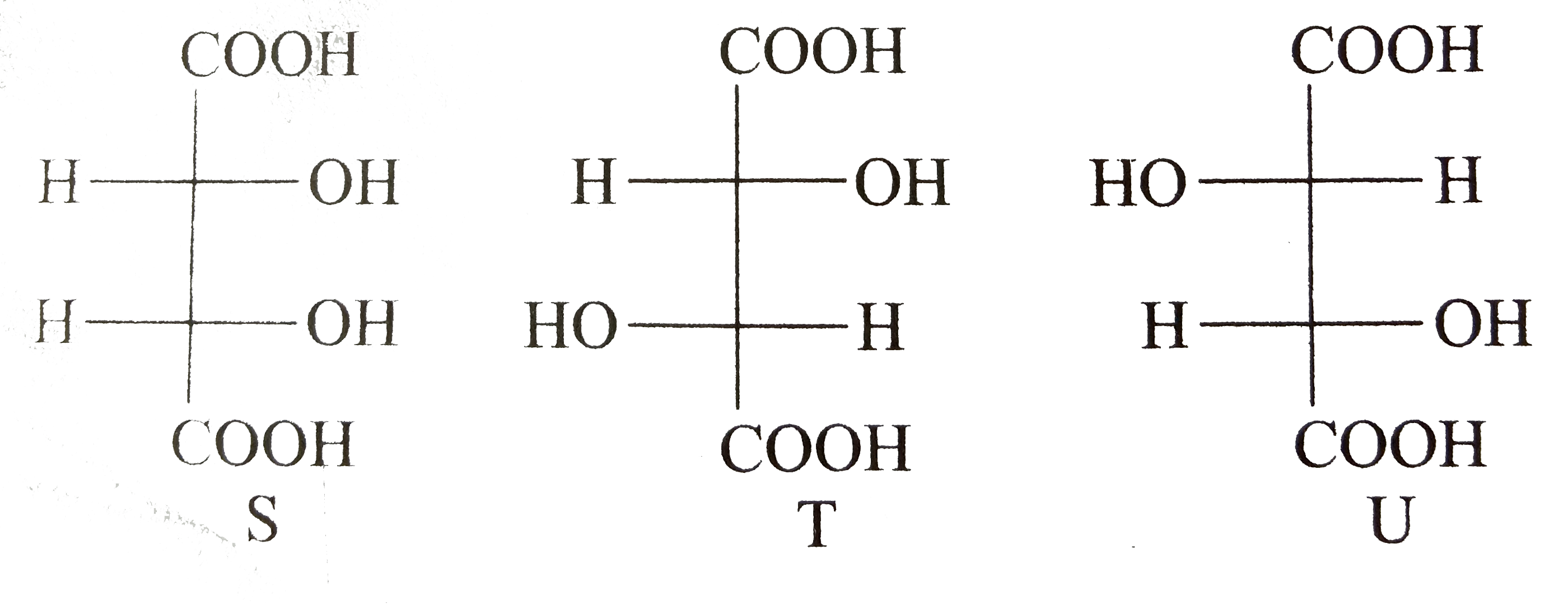 Compounds formed from `P` and `Q` are, respectively02:21View Solution
Compounds formed from `P` and `Q` are, respectively02:21View SolutionP and Q are isomer of dicraboxylic acid `C_(4)H_(4)O_(4)` Both decolourixe `Br_(2)//H_(2)O`. On heating , P forms the cyclic anhydride. Upon treatment with duilute alkaline `KMnO_(4)`. P as well a Q could produce one or more than one from S,T and U.
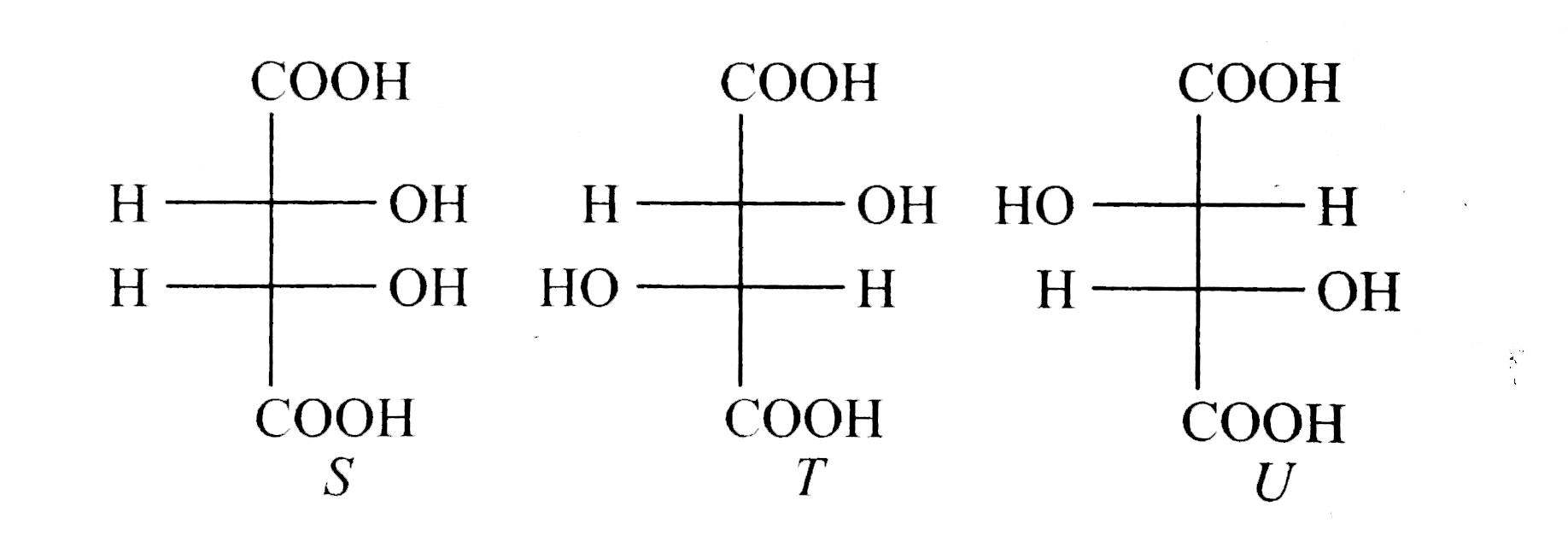
In the following reaction sequences V and W are respectively
 05:30View Solution
05:30View SolutionThe reactivity of compound `Z` with different halogens under appropriate conditions is gives below-

The observed pattern of electrophilic substitution can be explained by-04:54View SolutionThe the identification of `beta`-napthol using dye test, it is necessary to use:
00:46View SolutionMatch the four material (P, Q, R, S) given in List -I with the corresponding reaction schemes (I, II, III, IV) provided in List-II and select the correct answer using the code given below the lists.
 View Solution
View SolutionAmong The following the number of reaction(s) that prouduce(s) benzadelhyde is
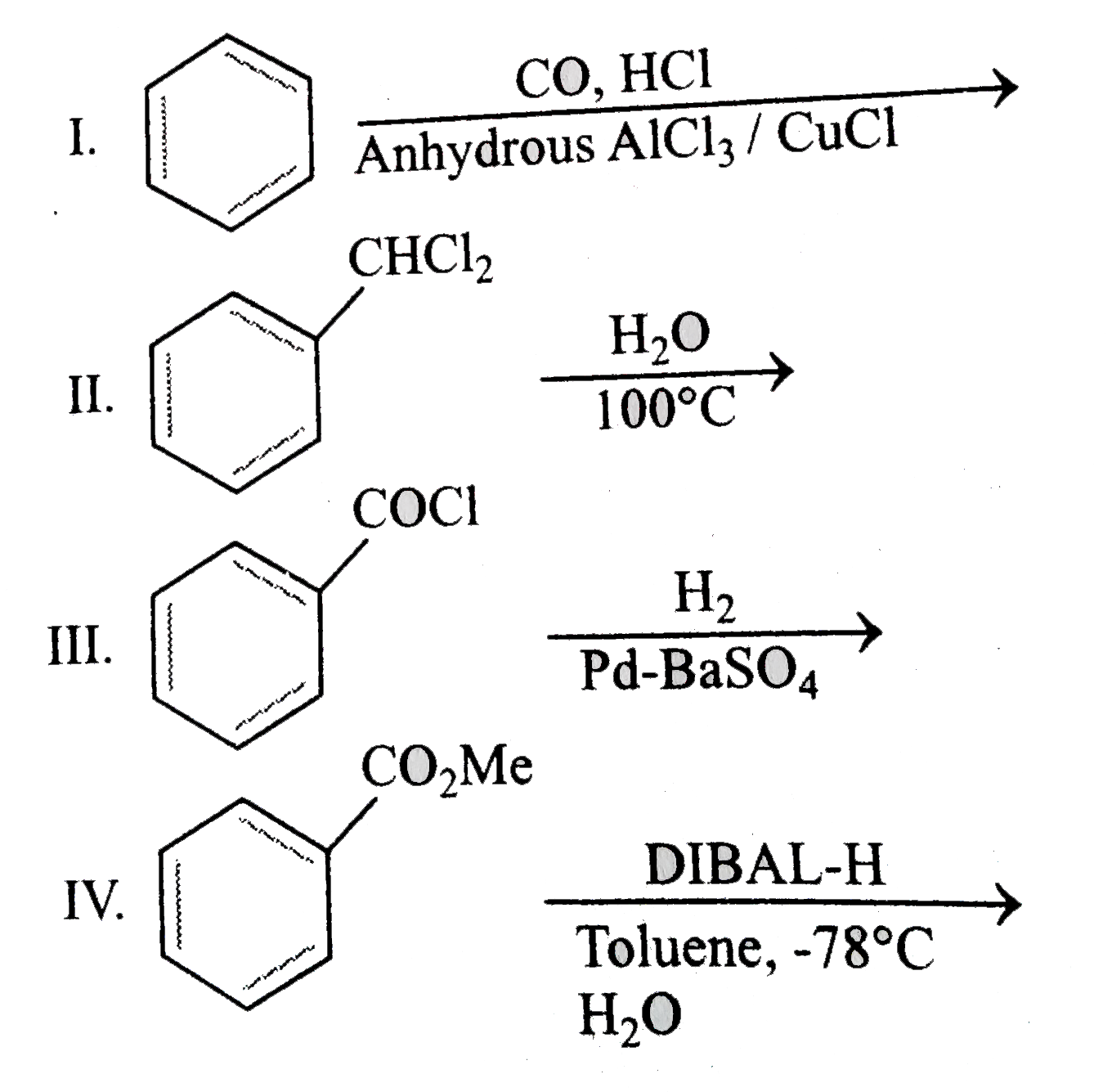 03:02View Solution
03:02View SolutionThe major product U in the following reactions is
 02:38View Solution
02:38View Solution
In the following reactions, the major product W is:02:19View SolutionThe product (s) of the following reaction sequence is (are)
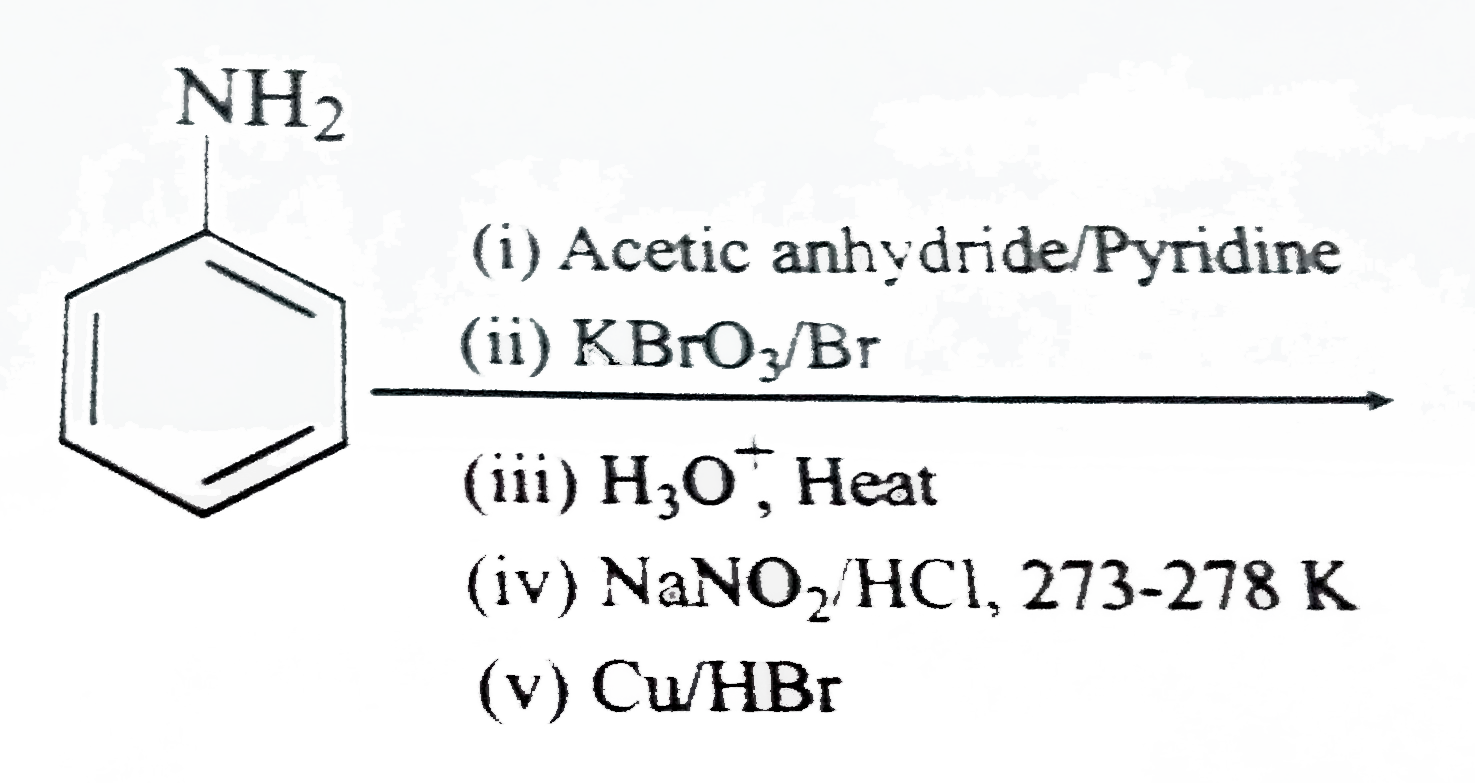 03:39View Solution
03:39View SolutionThe correct statement(s) about the following reaction sequence is (are)
Cumene `(C_(9)H_(12))underset((ii)H_(3)O^(+))overset((i)O_(2))rarrPoverset(CHCl_(3)//NaOH)rarr`
Q(major)+R(minor), `Q underset(PhCH_(2)Br)overset(NaOH)rarrS`12:38View SolutionThe major product of the following reaction is
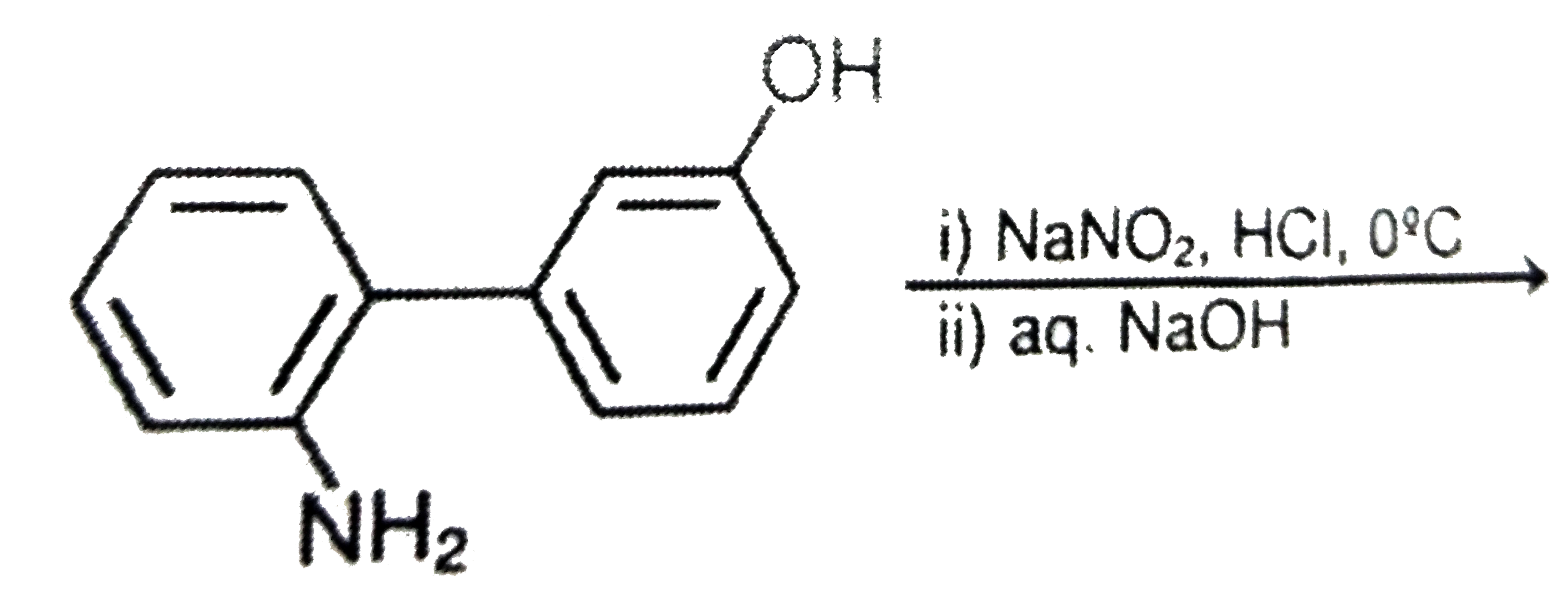 02:15View Solution
02:15View SolutionThe reaction of compounf P with `CH_(3)MgBr` (excess) in `(C_(2)H_(5)_(2)O` followed by addition of `H_(2)O` give Q the compound Q on treatment with `H_(2)SO_(4)`at `0^(@)` C gives R. the reaaction of R with `CH_(3) COCl` in the presence of anhydrous `AlCl_(3)"in" CH_(2)Cl_(2)` followed by treatment with `H_(2)O` produces compound S. [Et in compound P is ethyl group] The product S is The product S is
 12:20View Solution
12:20View SolutionThe reaction of compounf P with `CH_(3)MgBr` (excess) in `(C_(2)H_(5)_(2)O` followed by addition of `H_(2)O` give Q the compound Q on treatment with `H_(2)SO_(4)` at `0^(@)` C gives R. the reaaction of R with `CH_(3) COCl` in the presence of anhydrous `AlCl_(3)` in `CH_(2)Cl_(2)` followed by treatment with `H_(2)O` "produces compound S`. [Et in compound P is ethyl group]
The reaction, Q to R and R TO S, are07:58View SolutionThe reaction(s) leading to the formation of 1, 3, 5 -trimethylbenzene is (are)
08:10View SolutionAniline reacts with mixed acid (conc. `HNO_(3)` and conc. `H_(2)SO_(4)`) at 288 K to give P (51%), Q (47%) and R(2%). The major product (s) of the following reaction sequence is (are)
 View Solution
View SolutionIn the following reaction sequence, the amount of D (in g) formed from to moles of acetophenone is.......... (Atomic weights in `g mol^(-1) : H = 1, C = 12, N = 14, O = 16, Br = 80`. The yield (%) corresponding to the product in each step is given in the parenthesis)
 View Solution
View Solution
Exercise-3 (Part-I) JEE Advanced questions and complete solutions for chapter AROMATIC COMPOUNDS of PHYSICAL, INORGANIC, AND ORGANIC CHEMISTRY of Class 12
All Exercises from RESONANCE NEW Class 12 CHEMISTRY AROMATIC COMPOUNDS
- APSP (Part-I)
- Exercise -2 (Part-I Only one option correct type)
- Exercise-1 (Part - I Subjective Questions)
- Exercise-3 (Part-I) JEE Advanced
- JEE MAIN (Online Problem)
- Part - II JEE MAIN
- Part - II NSEC
- Part - II Only one option correct type
- Part - II Single or double integer type
- Part - III Match the column
- Part - III Practice Test-10
- Part - III Practice Test-11
- Part - III Practice Test-12
- Part - III Practice Test-13
- Part - III Practice Test-14
- Part - III Practice Test-15
- Part - III Practice Test-16
- Part - III Practice Test-17
- Part - III Practice Test-18
- Part - III Practice Test-19
- Part - III Practice Test-2
- Part - III Practice Test-20
- Part - III Practice Test-21
- Part - III Practice Test-22
- Part - III Practice Test-3
- Part - III Practice Test-4
- Part - III Practice Test-5
- Part - III Practice Test-6
- Part - III Practice Test-7
- Part - III Practice Test-8
- Part - III Practice Test-9
- Part - IV Comprehension
- Part-III : One or more than one option correct type
